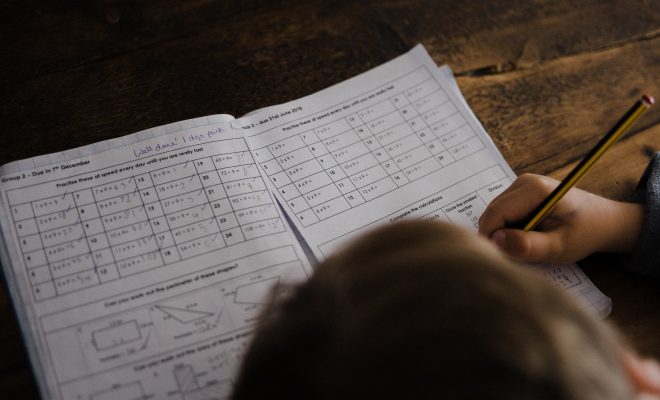Effective Teaching Strategies

Introduction: The Importance of Effective Teaching Strategies
Effective teaching strategies are essential for fostering an engaging and productive learning environment. As educators encounter diverse student needs, backgrounds, and learning styles, the strategies they employ can significantly impact student engagement, comprehension, and overall academic success. This article explores various effective teaching strategies that educators can implement to enhance learning outcomes and create a positive classroom atmosphere.
Active Learning: Engaging Students in the Learning Process
Active learning refers to strategies that actively involve students in the learning process rather than passively receiving information. This approach encourages students to take ownership of their education, leading to deeper understanding and retention of knowledge.
Collaborative Learning: Fostering Teamwork and Communication
Collaborative learning is a teaching strategy that promotes teamwork and communication among students. By working together on projects, discussions, or problem-solving tasks, students develop critical social and cognitive skills.
Benefits of Collaborative Learning:
Enhances communication skills: Students learn to articulate their thoughts and listen to others.
Encourages diverse perspectives: Group work exposes students to various viewpoints and approaches, enriching their learning experience.
Promotes problem-solving skills: Working in teams allows students to tackle complex problems collaboratively.
Challenging Students: The Role of Rigor in Learning
Challenging students is crucial for fostering a growth mindset and encouraging them to push their limits. Effective teachers provide tasks that are appropriately challenging, allowing students to engage with material that stretches their abilities without overwhelming them.
Differentiated Instruction: Meeting Diverse Learning Needs
Differentiated instruction is a pedagogical approach that recognizes and addresses the diverse learning needs of students. By tailoring instruction to accommodate different learning styles, interests, and abilities, teachers can create a more inclusive classroom environment.
Strategies for Differentiated Instruction:
Flexible grouping: Organizing students into varying groups based on their skills or interests.
Varied assessment methods: Offering multiple ways for students to demonstrate their learning, such as projects, presentations, or written assignments.
Choice in learning activities: Providing students with options for how they engage with content allows for greater ownership of their learning.
Formative Assessment: Ongoing Feedback for Improvement
Formative assessment involves ongoing evaluation of student learning throughout the instructional process. This strategy provides valuable feedback to both educators and students, allowing for adjustments to teaching methods and learning approaches.
Types of Formative Assessment:
Quizzes and polls: Quick assessments can gauge understanding and inform instruction.
Peer reviews: Students can provide feedback to one another, fostering critical thinking and analysis.
Exit tickets: Short reflections or questions at the end of a class can help instructors understand student comprehension.
Technology Integration: Enhancing Engagement and Accessibility
Incorporating technology into teaching can enhance engagement and accessibility. Tools such as interactive presentations, online discussion forums, and educational apps can create dynamic learning experiences.
Benefits of Technology Integration:
Increased engagement: Interactive tools capture students’ attention and motivate them to participate.
Access to resources: Technology provides access to a wealth of information, enabling students to explore topics in depth.
Personalized learning: Educational software can adapt to individual learning paces, allowing for tailored instruction.
Creating a Positive Classroom Environment: Supporting Student Well-being
A positive classroom environment is essential for effective learning. When students feel safe and supported, they are more likely to engage in the learning process and take risks in their education.
Strategies for Creating a Positive Environment:
Establishing clear expectations: Communicating behavioral and academic expectations helps students understand what is required for success.
Encouraging a growth mindset: Promoting the idea that abilities can improve with effort encourages resilience and perseverance.
Building relationships: Taking time to connect with students individually fosters trust and respect.
Inquiry-Based Learning: Promoting Critical Thinking
Inquiry-based learning encourages students to ask questions, investigate, and discover solutions through exploration. This approach fosters critical thinking skills and promotes a deeper understanding of content.
Benefits of Inquiry-Based Learning:
Encourages curiosity: Students are motivated to learn when they can explore their interests.
Promotes critical thinking: Engaging with complex questions requires students to analyze and evaluate information.
Supports collaboration: Inquiry-based projects often involve teamwork and communication, enhancing social skills.
Culturally Responsive Teaching: Valuing Diversity in the Classroom
Culturally responsive teaching recognizes and values the diverse backgrounds of students. By incorporating diverse perspectives and experiences into the curriculum, educators can create a more inclusive learning environment.
Strategies for Culturally Responsive Teaching:
Integrating diverse materials: Including literature, examples, and resources from various cultures enriches the curriculum.
Encouraging student voice: Allowing students to share their experiences fosters a sense of belonging and validation.
Building cultural competence: Educators should seek to understand their students’ backgrounds to better support their learning.
Conclusion: The Path to Effective Teaching
Effective teaching strategies are essential for maximizing student engagement and academic success. By employing a variety of approaches, such as active learning, differentiated instruction, and culturally responsive teaching, educators can create dynamic and inclusive learning environments. As teaching continues to evolve, it is vital for educators to stay informed about new strategies and practices that can enhance the educational experience for all students. Ultimately, the goal of effective teaching is to inspire a love of learning and equip students with the skills they need to succeed in an ever-changing world.




